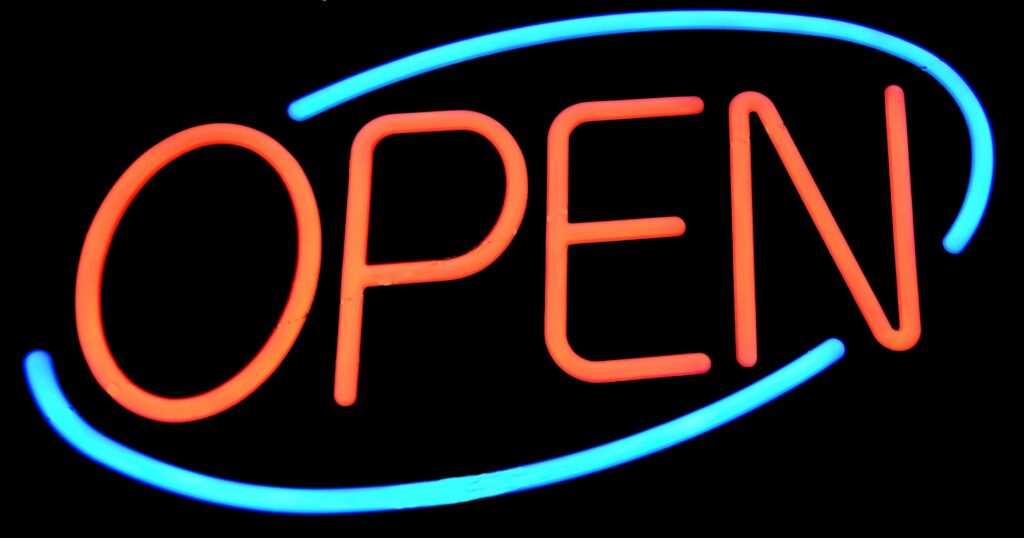What is the Small Business Administration (SBA)?
The US Small Business Administration is a federal government agency devoted to supporting small businesses. The agency provides numerous resources for small business owners, including entrepreneurial training, business grants, contract services, local assistance, and more.
One of the agency’s most significant resources is the SBA loan program. Under the program, small business owners work with the SBA’s approved lending partners. SBA-approved lenders are one of three types of financial institutions: commercial banks, credit unions, or alternative financing facilitators like United Capital Source.
The SBA does not service the loans or provide funding, but it does set limits on what lenders can charge and partially guarantees the loan amounts. With backing from the government, lenders can offer higher borrowing amounts at lower interest rates and longer repayment terms than traditional business loans.
However, to take advantage of any SBA service, including getting SBA loans, your business must meet the agency’s size standards to qualify as a small business.
What are the Size Standards to be a small business?
Government agencies define small businesses in different ways.
IRS Small Business Definition
The Internal Revenue Service defines a small business as any enterprise that earns less than $10 million per year. However, different small business tax benefits might have additional qualifications.
SBA’s Small Business Definition
The SBA’s definition of a small business depends on the industry. The following industries often have subsectors that might change the number of employees or the maximum average annual receipts cutoff for small businesses. In a later section, we will cover how to find your exact subsector using NCAIS codes.
Average annual receipts refer to total revenue plus the cost of goods sold. The standards are as follows:
Agriculture: You cannot exceed $750,000 in average annual receipts for most agricultural businesses. However, some subsectors in fishing and gaming can go as high as $27.5 million (Postharvest crop activities).
Oil & Gas Extraction: 1,250 employees or 750 employees if natural gas liquid extraction.
Mining & Mining Support: Between 250 and 1,500, depending on the subsector. Some subsectors use annual receipts instead, and the limits range between $18 million and $45.5 million.
Utilities: Depending on the sector, no more than 250 to 1,500 employees. Three utility subsectors use annual receipts, ranging between $26.5 million to $36 million.
construction: There are many construction subsectors. On the low end, construction businesses cannot exceed $16.5 million, and the high-end limit is $39.5 million.
Manufacturing: Depending on the subsector, it cannot exceed 500 to 1,500 employees.
Wholesale Trade: Between 100 and 250 employees, depending on the subsector.
Retail Trade: Most sectors use average annual receipts, with the cutoff for small businesses running between $8 million and $41.5 million. A few retail subsectors use the total number of employees between 100 and 200.
Transportation and warehousing: Employee limits range from 500 to 1,500. Some sectors use receipts ranging from $8 million to $41.5 million.
Information: Employee limits are between 250 and 1,500 employees; annual receipts range from $9.5 million to $41.5 million.
Finance and Insurance: Some sectors limit employees to 1,500, and others limit annual receipts between $13 million and $41.5 million. The small business cutoff for some financial companies depends on total assets, not to exceed $750 million.
Real estate, rental, and leasing: Average annual receipt limits range from $8 million to $41.5 million.
Professional, scientific and technical services: annual receipt limits range from $8 million to $41.5 million. For other subsectors, employee limits range between 150 to 1,500 employees.
Management of companies and enterprises: Offices of bank holding companies cannot exceed $34 million in average annual receipts. Offices of other holding companies cannot earn more than $40 million.
Administrative and support, waste management, and remediation services: Depending on your subsector, no more than $7.5 million to $41.5 million in average annual receipts.
Educational services: Depending on the subsector, cannot exceed more than $8 million to $41.5 million in average annual receipts.
Healthcare and social assistance: Cannot exceed $7.5 million to $38.5 million in average annual receipts, depending on the subsector.
Arts, entertainment, and recreation: Depending on the subsector, it cannot exceed between $8 million and $41.5 million in average annual receipts.
Accommodation and food services: Cannot exceed between $8 million and $41.5 million in average annual receipts, depending on the subsector.
Other services: Depending on your subsector, no more than $7 million to $41.5 million in average annual receipts.
What are the advantages of being a Small Business?
Small businesses represent more than 99% of all US enterprises. Since so much of the economy depends on small businesses’ success, several programs and incentives exist to assist qualifying companies.
Tax Incentives
Many local and state governments provide lucrative tax incentives to attract small businesses. For example, The Small Business Health Insurance Tax credit allows some companies to save up to 50% on employee healthcare costs when they purchase insurance from the Small Business Health Options Program (SHOP). There are other incentives to help ease a company’s federal income taxes.
Government Loans
Small business owners can potentially qualify for SBA loans, which are considered the gold standard of small business financing. There are many loan packages available in the SBA loan program. You should be able to find a loan to cover just about any business need.
The United States Department of Agriculture (USDA) administers the OneRD Guaranteed Loan Initiative to promote investment in rural economies. There are several loan options available.
Government Grants and Contracts
There are many grants available to certain small businesses. Federal, state, and local government agencies provide grant programs to help stimulate business and economic growth.
Being a small business can also help secure certain government contracts. The US federal government is the largest customer in the world. The SBA works with over 23 federal agencies to help secure government contracts for small business owners. For example, The Historically Underutilized Business Zones (HUBZone) program makes more contracts available for qualifying small businesses.
How can I tell if my business qualifies?
The SBA provides methods to check your business’s size status. Follow these steps:
- Find your NAICS code on the SBA size standards table.
- Calculate your three-year average for employees or annual receipts, depending on which criteria are used for your NAICS code on the table.
- Go to the SBA Size Standard Tool.
- Input your 6-digit NAICS code.
- The tool will prompt you to enter your average number of employees or annual receipts, depending on which metric is used for your code.
- The tool will return results, letting you know if your enterprise qualifies as a small business.
Frequently Asked Questions
Here are the most common questions about SBA small business size standards.
What loan options are available for Small Businesses?
As previously discussed, qualifying as a small business is the first step in obtaining an SBA loan. The loan program consists of the following:
- SBA 7(a) Loans.
- SBA Express Loans.
- SBA Export Express Loans.
- SBA 504 Loans (aka SBA CDC/504 Loans).
- SBA Microloans.
- SBA Disaster Relief Loans.
- SBA Export Loans.
There are other qualification requirements you must meet. Important qualification factors are whether your business operates primarily in the US and is based in the US.
In addition, each SBA-approved lender sets a minimum requirement for personal credit score, time in business, and annual revenue.
SBA loans are the most advantageous small business loans available, but they are not without downsides. Here is a quick summary of the benefits and drawbacks of SBA loans.
SBA Loan Pros & Cons
Pros:
- High borrowing amounts.
- Low interest rates and long repayment terms.
- You can use the funds for a variety of business purposes.
Cons:
- Lengthy application and approval process.
- Large amounts of paperwork.
- It might require collateral.
- It almost always requires a personal guarantee & down payment.
Other Small Business Loan Options
SBA loans are far from the only loan options for small businesses. Many of these loans have lower qualification requirements and much faster funding time.
You may be interested in any of the following:
- Working capital loans.
- Equipment financing.
- Merchant cash advance.
- Accounts receivable factoring.
- Revenue-based financing.
- Business lines of credit.
- Business term loans.
Does the SBA small business definition ever change?
Small business size standards are periodically updated. The government understands that making $15 million in revenue twenty years ago is different than $15 million in revenue today. As such, NAICS code limits are updated to reflect changes and economic growth.
NAICS codes were last updated in 2022. The SBA also updated its size definitions in July 2022. The Small Business Jobs Act of 2010 mandates a review of small business size standards every five years.
What’s the difference between a small and a micro business?
A micro business is a much smaller enterprise than a small business. Many companies launch as micro businesses before growing or scaling up to small business status. The SBA defines a micro business as an enterprise with fewer than 10 employees.
SBA’s Small Business Definition – Final Thoughts
Small businesses create two-thirds of new jobs and contribute nearly half of the GDP. The significant contribution of small businesses incentivizes the government to help support small business owners.
Various grants, loans, contracts, and other programs are exclusively available to small businesses. However, you must meet government size standards to qualify for any small business programs available.
Using the tools above, you can determine where your enterprise falls in terms of size. Contact us if you have more questions or want to apply for an SBA loan or other small business loan options.















